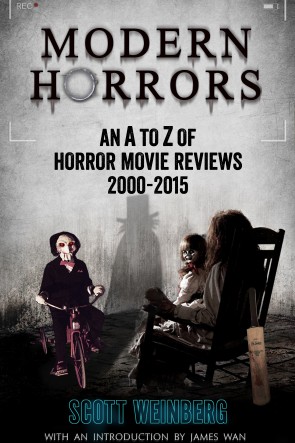Review: THE HOUSE ON PINE STREET (2015){0}
There’s fertile ground in the horror subgenre in which the question is posed (and not always resolved) as to whether a haunting, possession (etc.) is the result of paranormal phenomena or psychological problems.
You can see the attraction for filmmakers: a ‘have-your-cake-and-eat-it’ scenario in which they can manifest all sorts of scares, shenanigans and horrible goings-on, while audiences wonder whether what they’re seeing is actually happening, or all in the protagonist’s head. The best of these films manage to leave the question open right to the end (The Babadook is a particularly fine recent example), although coming down on one side or another (as in Rosemary’s Baby) can also be effective. It might spoil things to say to which camp The House on Pine Street belongs, although directors Aaron and Austin Keeling, and lead Emily Goss, do a decent job of keeping the audience guessing… for a while.
Seven months pregnant, Jennifer (Goss) moves from Chicago to her home town in the Midwest, leaving behind some mental health issues which the script leaves (unwisely, I think) to our imagination. Jennifer isn’t thrilled with the house they’ve chosen, especially when things start going bump in the night (and day), although – of course – only Jennifer experiences such phenomena as slamming doors, self-propelled objects and mysterious knocks that lead her to believe the house is haunted. You might think Jennifer’s husband (Taylor Bottles) and mother (Cathy Barnett) would fear for her safety, and the unborn baby’s, but both characters are written and played as entirely unsympathetic, and neither seems to care much for Jennifer one way or another. Only Jennifer’s friend Lauren (Natalie Pellegrini) gives her story any credence, but even she wonders whether it might be the hormones talking.
Partly funded by Kickstarter, and filmed in a 19th century house with its own alleged history of haunting, The House on Pine Street is competently directed, and is lifted considerably by Goss’s convincing central performance. Unfortunately, however, the cracks start to show about an hour into the (overlong) running time, and the questions posed by the film become less of the “are the supernatural goings-on real or imagined?” variety and more along the lines of “why are the characters behaving that way?”, “What is a psychic chiropractor doing in the script?” and finally “What does all this add up to?” The answer to the latter question, sadly, is “Not much.” If ever there was an argument for the benefits of script development, The House on Pine Street is it.
David Hughes (@DavidHughesTwit)









